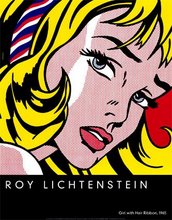
Trinity was the first test of a nuclear weapon. It was conducted by the United States on July 16, 1945, at a location 35 miles (56 km) southeast of Socorro, New Mexico, on what is now White Sands Missile Range, headquartered near Alamogordo. Trinity was a test of an implosion-design plutonium bomb—the same type of weapon used on Nagasaki, Japan, a few weeks later. The detonation was equivalent to the explosion of around 20 kilotons of TNT, and is usually considered as the beginning of the Atomic Age.
The creation of nuclear weapons arose out of political and scientific developments of the late 1930s. The rise of fascist governments in Europe and new discoveries about the nature of atoms converged in the plans of the United States and the United Kingdom to develop powerful weapons using nuclear fission as their primary source of energy. The Manhattan Project, as the Allied effort was called, culminated in the test of a nuclear weapon at what is now called Trinity site in July 1945, and the atomic bombings of Hiroshima and Nagasaki a few weeks later.

At 4:45 a.m. a crucial weather report came in favorably, and at 5:10 a.m. the twenty-minute countdown began. Most of the top-level scientists and military officers were observing from a base camp, ten miles (16 km) southwest of the test tower. Many other observers were around twenty miles (32 km) away, and some others were scattered at different distances, some in more informal situations (physicist Richard Feynman claimed to be the only person to see the explosion without the dark glasses provided, relying on a truck windshield to screen out harmful ultraviolet wavelengths[5]). The final countdown was read by physicist Samuel K. Allison.
At 05:29:45 local time (Mountain War Time), (11:29:45 GMT) the device exploded with an energy equivalent to around 20 kilotons of TNT (87.5 TJ). It left a crater of radioactive glass in the desert 3 meters (10 ft) deep and 330 meters (1,100 ft) wide. At the time of detonation, the surrounding mountains were illuminated brighter than daytime for one to two seconds, and the heat was reported as being as hot as an oven at the base camp. The observed colors of the illumination ranged from purple, to green, and eventually to white. The roar of the shock wave took 40 seconds to reach the observers.[4] The shock wave was felt over 160 km (100 miles) away, and the mushroom cloud reached 12 km (7.5 miles) of height.
Pretty Fuckin' Crazy, huh?



No comments:
Post a Comment